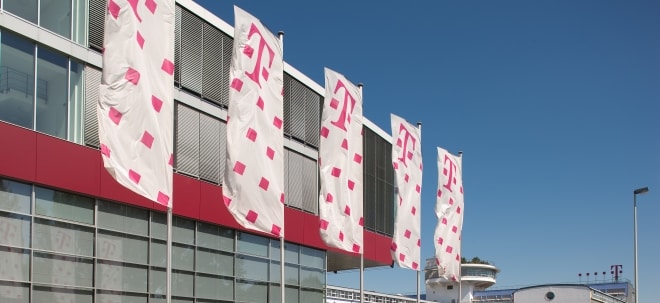Kapta Space Launches out of Stealth Mode to Develop the Next Generation of Advanced Spaceborne Radar Systems
Former Echodyne and Astranis Engineers Raise $5 Million to Field Advanced Spaceborne Radar Systems for National Defense and Commercial Use Cases
SEATTLE, Feb. 21, 2025 /PRNewswire/ -- Kapta Space, a Seattle-based space tech startup, today came out of stealth mode and announced that it has raised a $5 million seed round to support the development of its advanced spaceborne electronically-steered, radar-based imaging technology. The round was led by MetaVC Partners, in participation with Entrada Ventures and Blue Collective. The company will use the funds to accelerate on-orbit demonstrations.
Founded by Milton Perque (formerly of Echodyne) and Adam Bily (formerly of Apple and Astranis) in 2023, Kapta Space offers a solution that centers around a sophisticated, electronically-steered antenna radar array through the use of metasurface technology. Kapta's novel approach to electronic beam steering will provide a more capable, scalable, and cost-effective solution compared to today's state of the art technology, such as Active Electronically Steered Arrays (AESAs).
Kapta initially will enable two important capabilities from satellites in Low Earth Orbit (LEO): persistent geospatial imagery for Earth Observation (EO) and ground target tracking modalities for defense missions.
By employing a technique called Synthetic Aperture Radar (SAR), Kapta can create high-resolution "around-the-clock" imagery and analytics from space to provide commercial industries persistent, actionable information that is largely lacking today.
Kapta believes there are blind spots in the EO industry (namely commercial SAR imagery, data, and analytics) that cannot be addressed with today's technologies. While others are delivering high-resolution satellite imagery products to satisfy DoD/Intel demand, Kapta has a different thesis. "SAR isn't just about capturing satellite images. Our system allows us to deliver a more diverse set of data products to serve the broader commercial market. Although our system can provide small, high-resolution images, we can also deliver many other imaging products and modalities that today's technologies simply are not capable of," says Kapta Space CTO and co-founder Adam Bily.
For example, Kapta's system enables an imaging technique called InSAR (Interferometric Synthetic Aperture Radar). InSAR mainly is used for earth displacement monitoring (a key need of large-scale mining operations, for instance) and produces a 3D deformation map of the earth that can cover very large areas with centimeter-scale sensitivity from space. Satellites using Kapta's technology are being designed to provide the highest quality InSAR data on the market. "With a modest constellation of around 10 satellites, we could provide rapid-revisit, practical 3D infrastructure monitoring of key locations all around the world," says Bily.
Kapta Space CEO and co-founder Milton Perque suggested that their technology transcends just persistent EO imagery and analytics. "Our tech has much broader implications than just SAR," says Perque. "What we see is more of an advanced, multi-mission Spaceborne radar sensor that would enable many of the critical defense missions that don't exist at scale, like GMTI (or Ground Moving Target Indication; missions of tracking slow moving ground targets from space). That's not possible with a low-cost, mechanically pointed system. To enable these critical missions, radar sensors are required to be sophisticated, yet cost-efficient. This is incredibly challenging, and it has never existed in space at scale."
As far back as 25 years ago, the Department of Defense (DoD) began to explore moving airborne missions (like those performed by AWACs, Wedgetail and JSTARS) into space. Space-based operations guarantee global, persistent access to areas in conflict, like the current war in Ukraine. Conducting these advanced missions out of harm's way is among the US military's most challenging efforts.
The advancements Kapta brings to the defense domain are evident in its breakthrough performance and low cost. For example, in Q2 of 2023, Kapta was awarded a $1.8M Direct to Phase II SBIR to build a version of its electronically steered antennas for spaceborne radar and granted security clearances needed to execute on classified defense contracts. The company plans to continue to submit proposals to other non-dilutive funding vehicles throughout the year.
"AESAs are plagued with several problems that generally make them impractical for spaceborne applications at scale," said Chris Alliegro, managing partner, MetaVC Partners, a metamaterials-focused VC firm. "That's where metamaterials come in. The Kapta team has designed a metamaterials-based radar imaging device that offers improved electronic scanning at lesser cost, complexity, and power consumption than spaceborne AESA's. And we are incredibly lucky to have Milton and Adam at the wheel, two early pioneers in the development of metamaterials-based systems."
About Kapta Space
Seattle-based Kapta Space is a developer and operator of spaceborne radar technology that provides low-cost, advanced, electronically steered array sensors. By employing a technique called Synthetic Aperture Radar (SAR), Kapta creates high-resolution imagery and analytics from space in near real-time, addressing the limitations of high costs and small area coverage, and providing critical data for a variety of applications. This innovative technology has the potential to revolutionize industries such as defense, intelligence, and commercial earth observation. For more information on Kapta Space, go to our website at www.kaptaspace.com.
Media Contact:
Tim Turpin
CodePR
timt@codepr.com
![]() View original content to download multimedia:https://www.prnewswire.com/news-releases/kapta-space-launches-out-of-stealth-mode-to-develop-the-next-generation-of-advanced-spaceborne-radar-systems-302382016.html
View original content to download multimedia:https://www.prnewswire.com/news-releases/kapta-space-launches-out-of-stealth-mode-to-develop-the-next-generation-of-advanced-spaceborne-radar-systems-302382016.html
SOURCE Kapta Space


